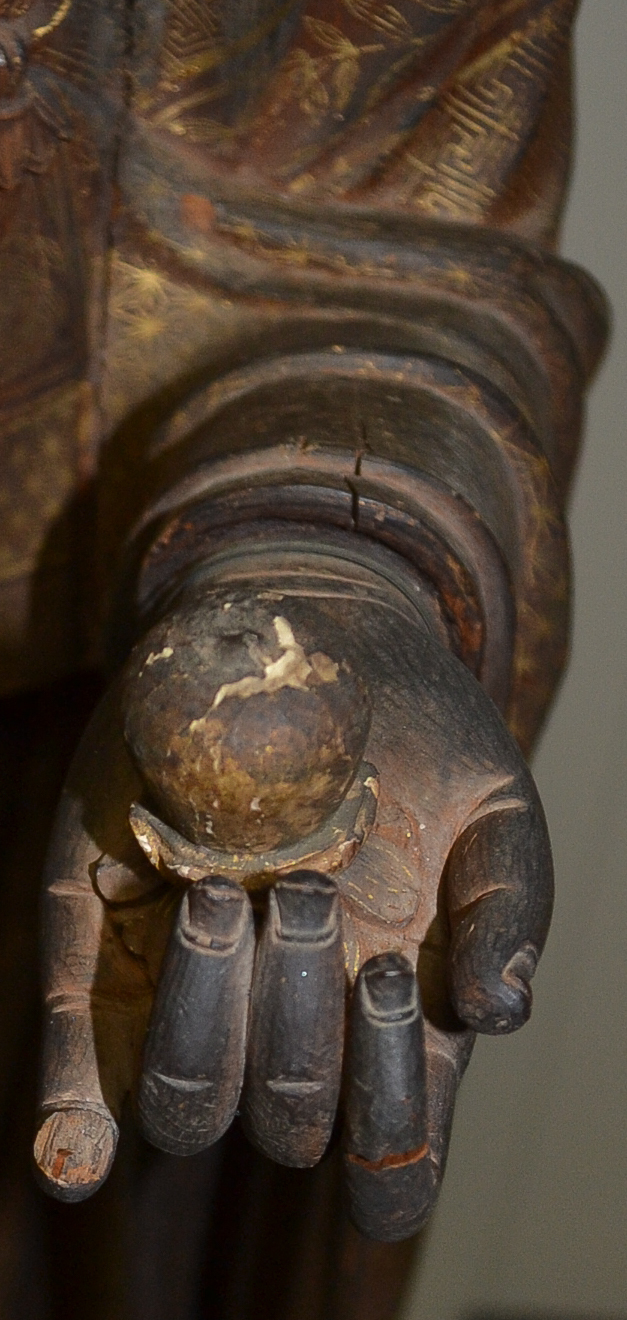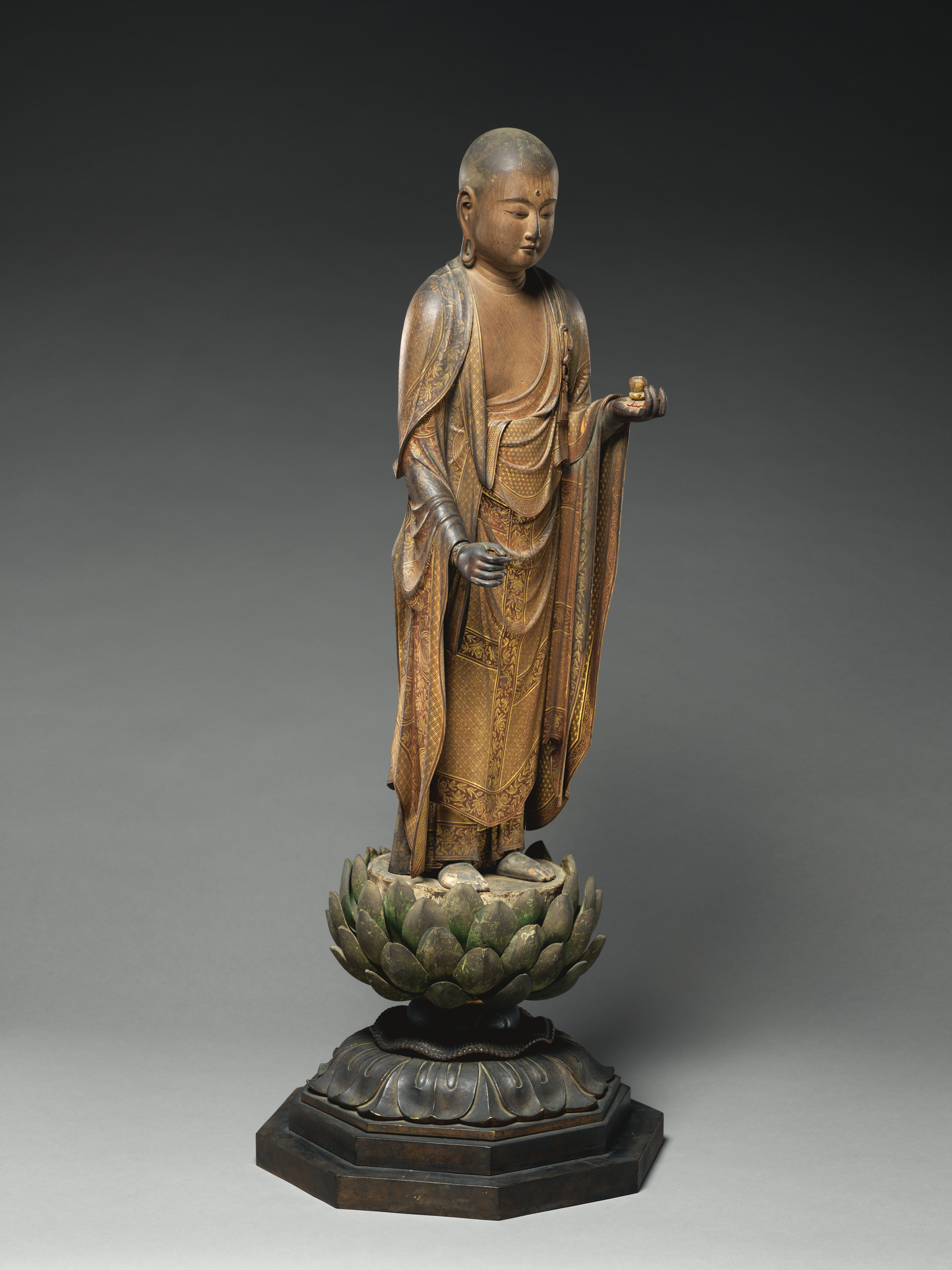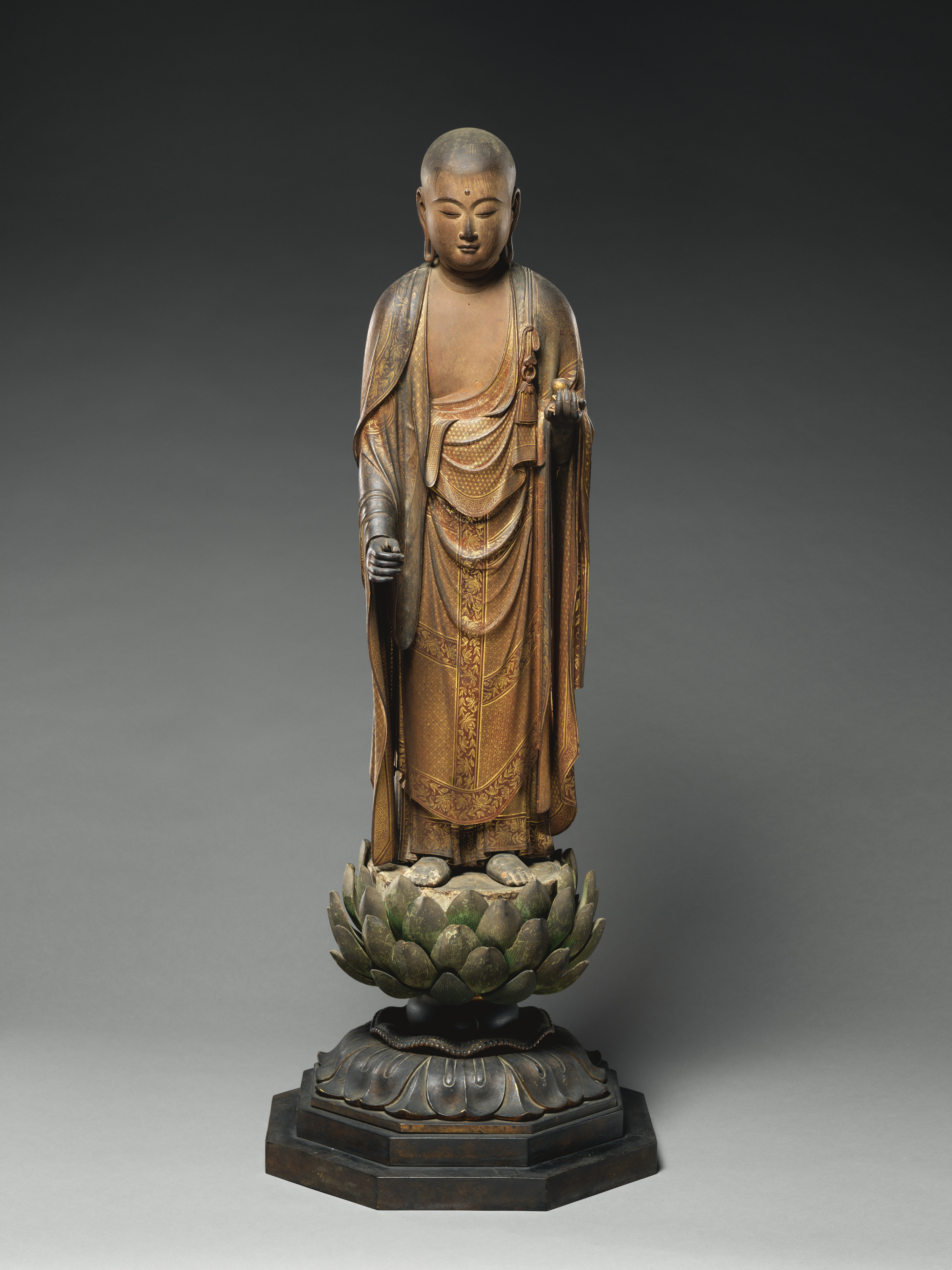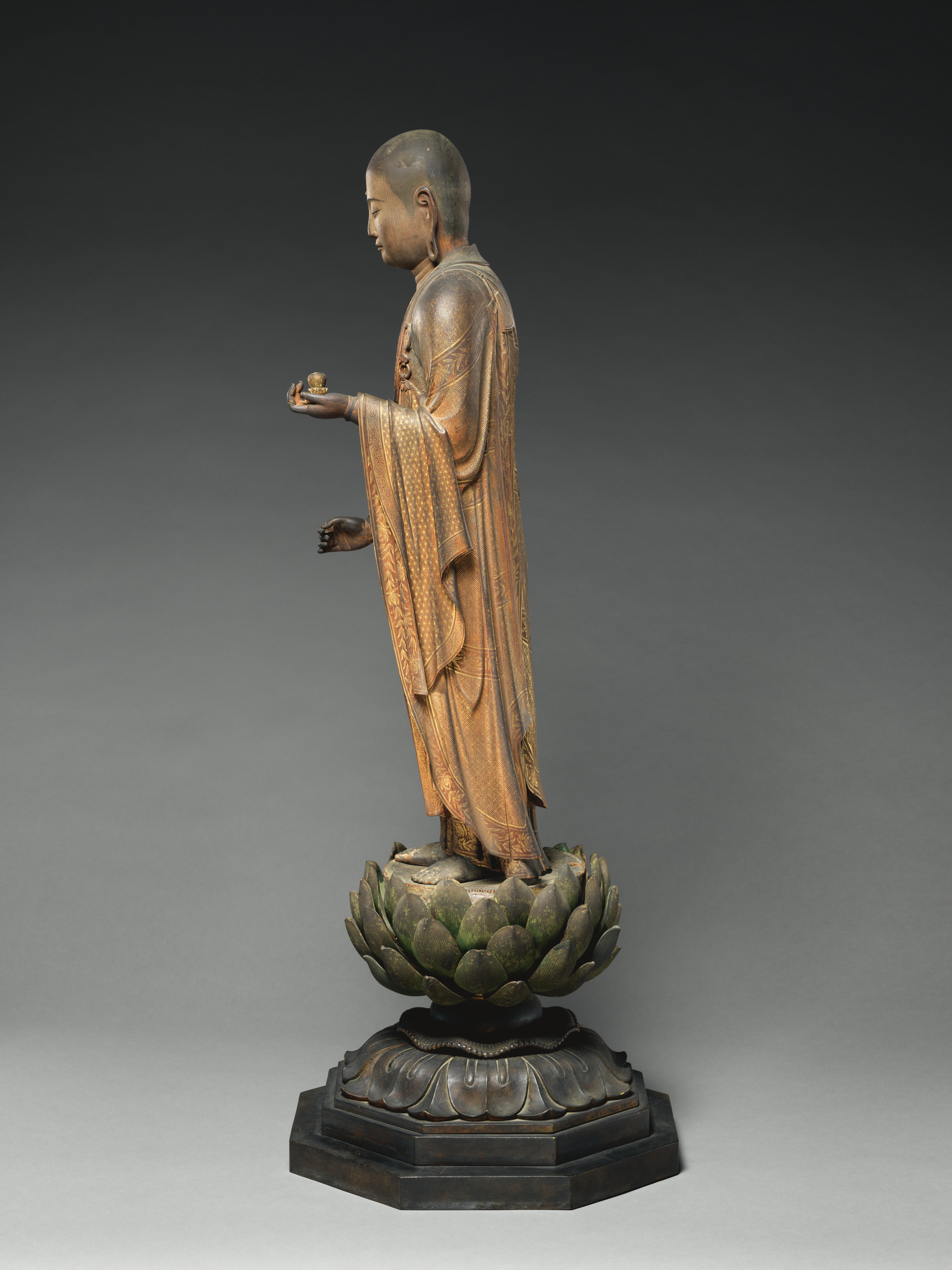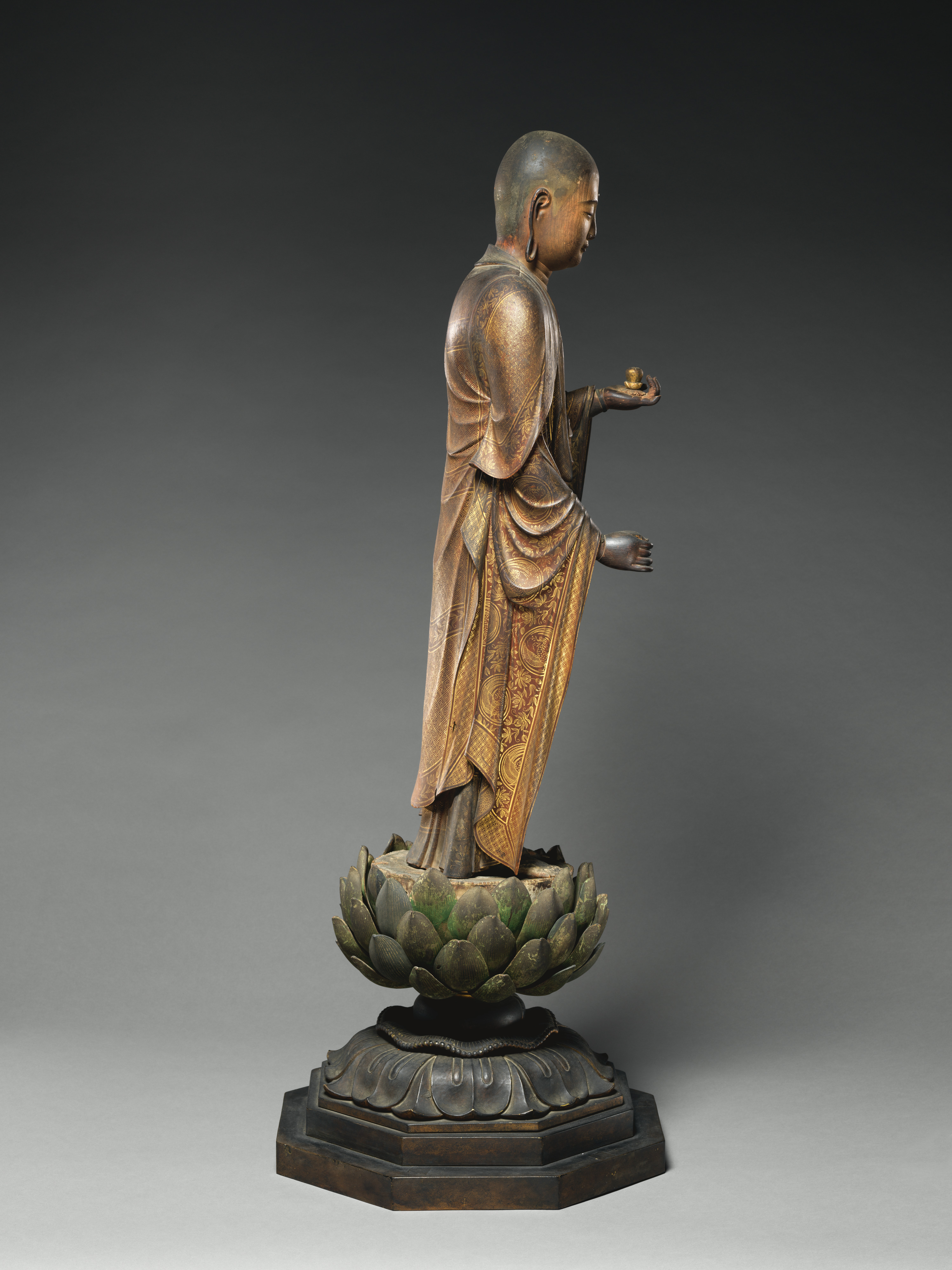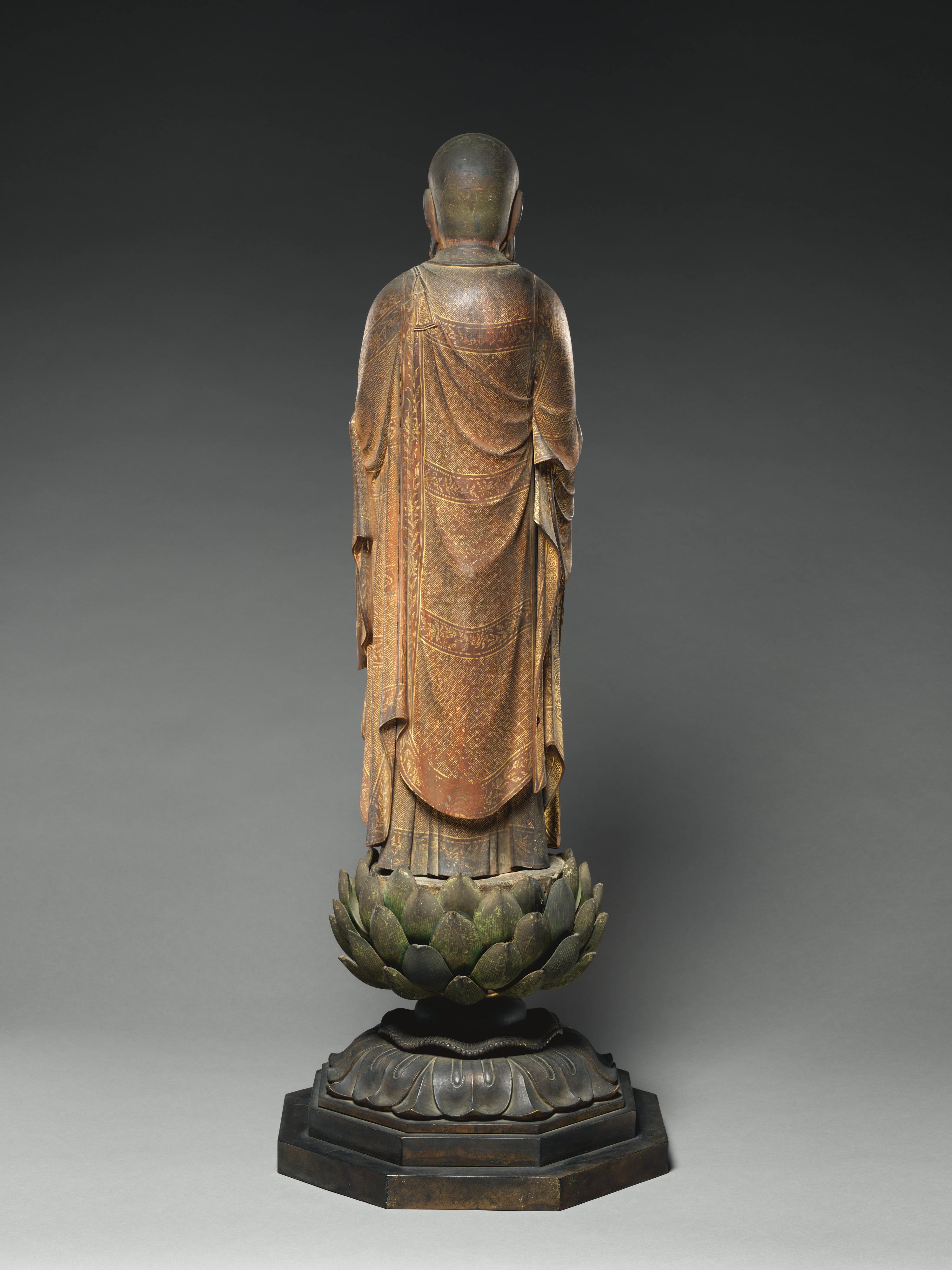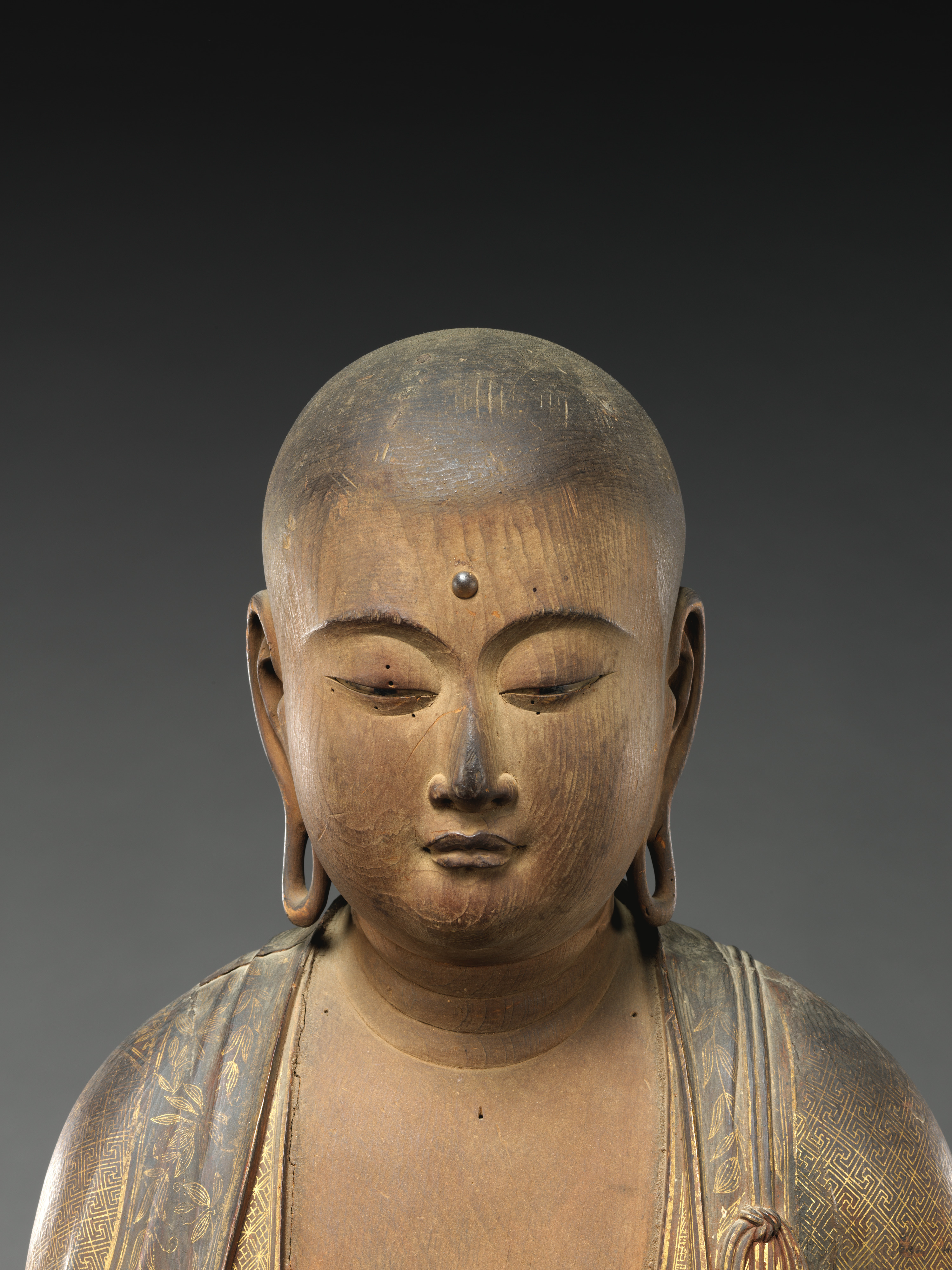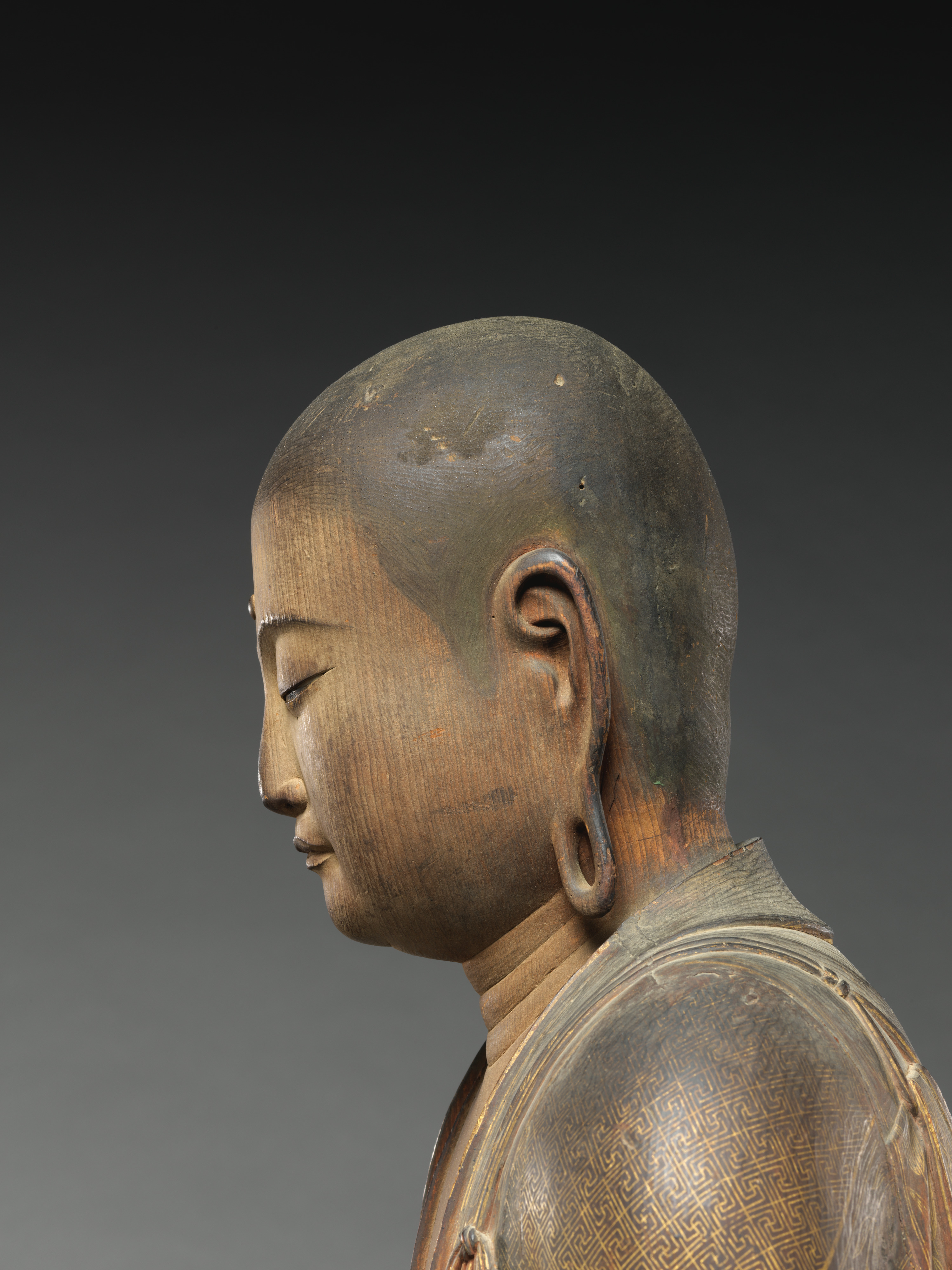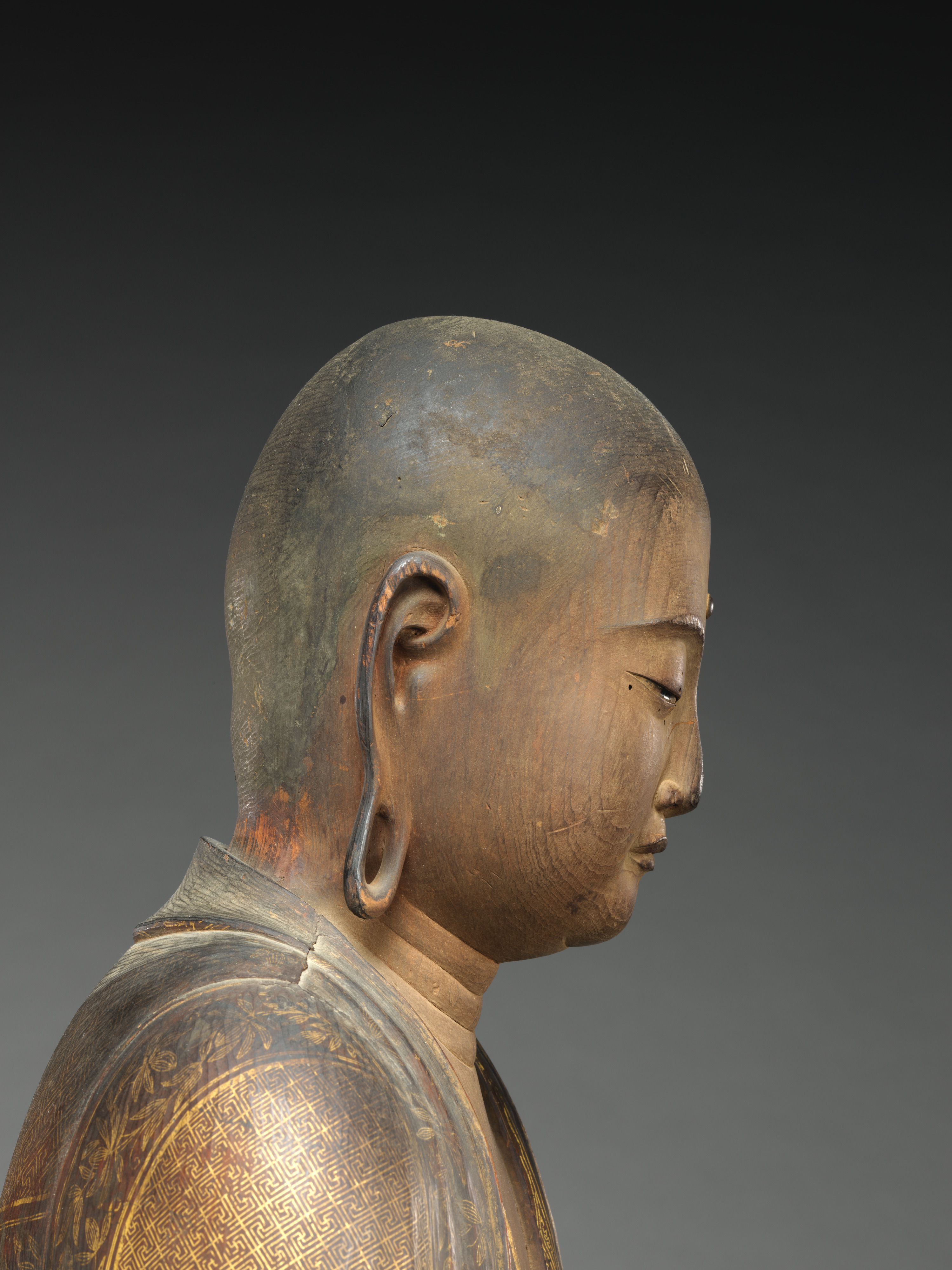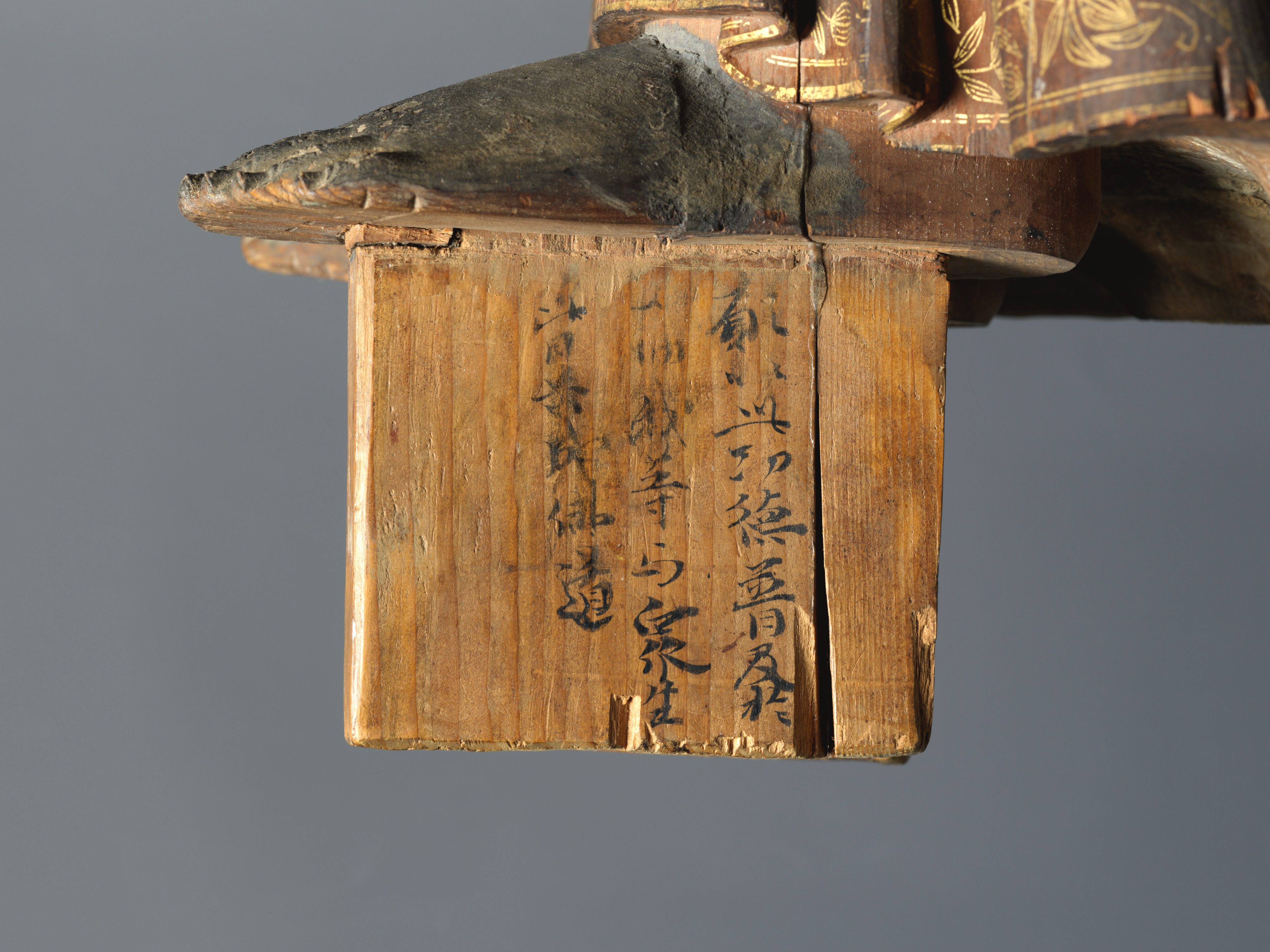The Bodhisattva Jizō
Intan Japanese
Jizō Bosatsu (Sanskrit: Bodhisattva Kshitigarbha) is an enlightened being who, out of compassion, has chosen to lead others along the Buddhist path. In Japan he is best known for rescuing souls from hell and for protecting children. Adhering to traditional iconography Jizō is portrayed as a youthful monk, with a shaved head and wearing a patchwork surplice (kesa) over his robe. He wields a monk’s staff (shakujō) in his right hand—which he rattles to awaken humans from their delusions—and in his left hand holds a jewel of wisdom that grants all wishes. His long earlobes and the urna on his forehead are symbols of Buddhist enlightenment.
The statue, as was standard for the period, was constructed with several blocks of Japanese cypress (hinoki) employing the joined wood-block technique (yosegi-zukuri). The figure is hollow, and the rock-crystal eyes were inserted from inside of the head. Some sections of the surface are unpainted; some are polychromed; and, most dramatically, the monk’s vestment (kesa) is meticulously decorated with cut-gold leaf (kirikane) and gold paint (kindei).
This sculpture is one of only three surviving works on which the name of the sculptor Intan is recorded. In this case, Intan’s name appears on a wooden tenons used to slot the bodhisattva’s feet into the lotus pedestal base, and states that it was completed on the 24th day of the 9th month of Shōō 4 (1291) The name of the primary patron in the inscription is listed as Kyōganbō Daisōzu [Senior high priest] Rin’ei, who is believed to have been a monk of Kōfukuji. The other patron, Jitsu’ei Enshunbō, because he shares the same “ei” character as Rin’ei, was probably affiliated with Kōfukuji as well. Therefore, it is reasonable to assume that the statue was commissioned for a subtemple of Kōfukuji and remained there until modern times (see the research results by Nedachi Kensuke, cited in References). Another work associated with Intan, a seated figure of the same bodhisattva, now designated as an Important Cultural Property, belongs to the temple Jōki’in at Mount Kōya and was carved by a team of three sculptors (see inscription below). The sculptor’s name also appears in a statue traditionally said to be Gūze Kannon at Akishinodera, an eighth-century temple in Nara, whose Kamakura-period main hall is designated as a National Treasure.
Biographies of Buddhist sculptors of all periods of premodern history are fragmentary at best, but various documentary evidence suggests that Intan was a monk of Kofukuji Temple. The use of “In” 院 indicates he was affiliated with In lineage of Buddhist sculptors. Since the “tan” 湛 of his name is the same character used by Tanke i湛慶, the son of Unkei 運慶 and celebrated sculptor in his own right, we can situate Intan as a sculptor who saw himself as heir to the techniques and styles of the Kei school in Nara, but also as part of a new lineage in the late thirteenth century.
Due to rights restrictions, this image cannot be enlarged, viewed at full screen, or downloaded.
This artwork is meant to be viewed from right to left. Scroll left to view more.



